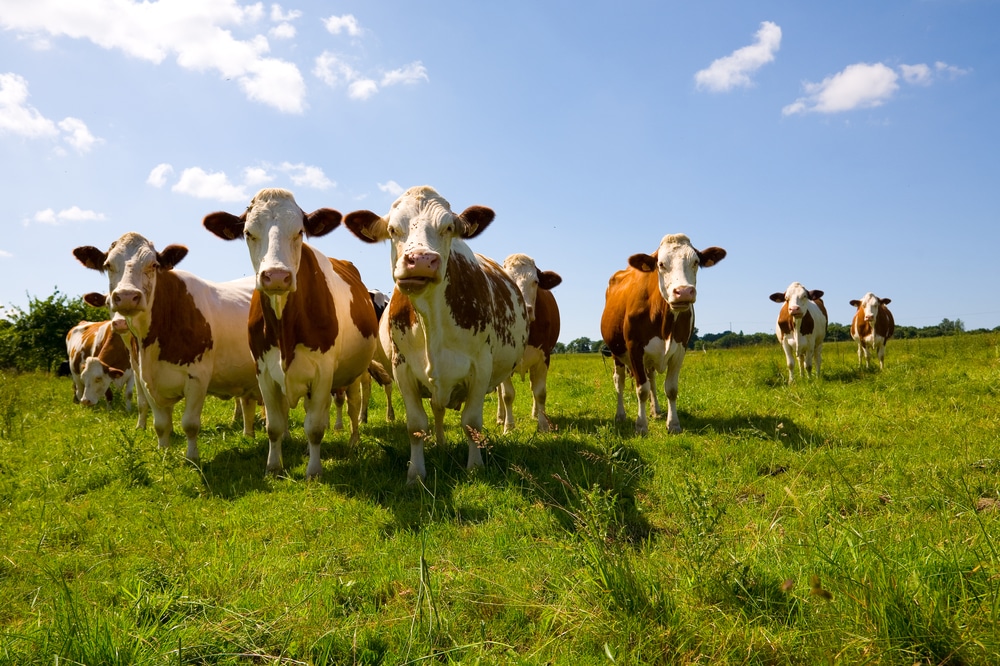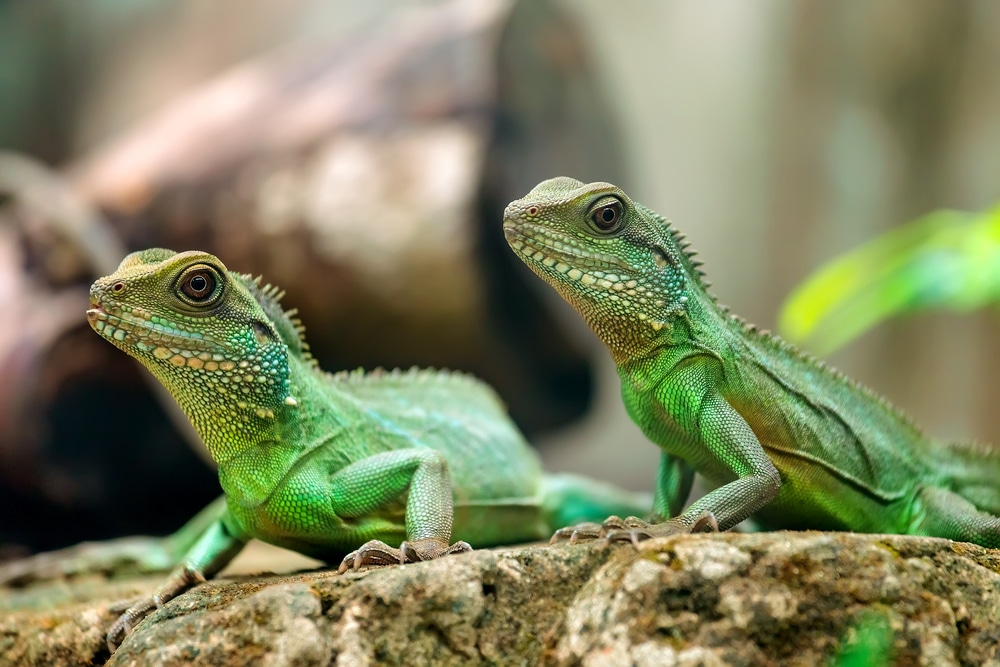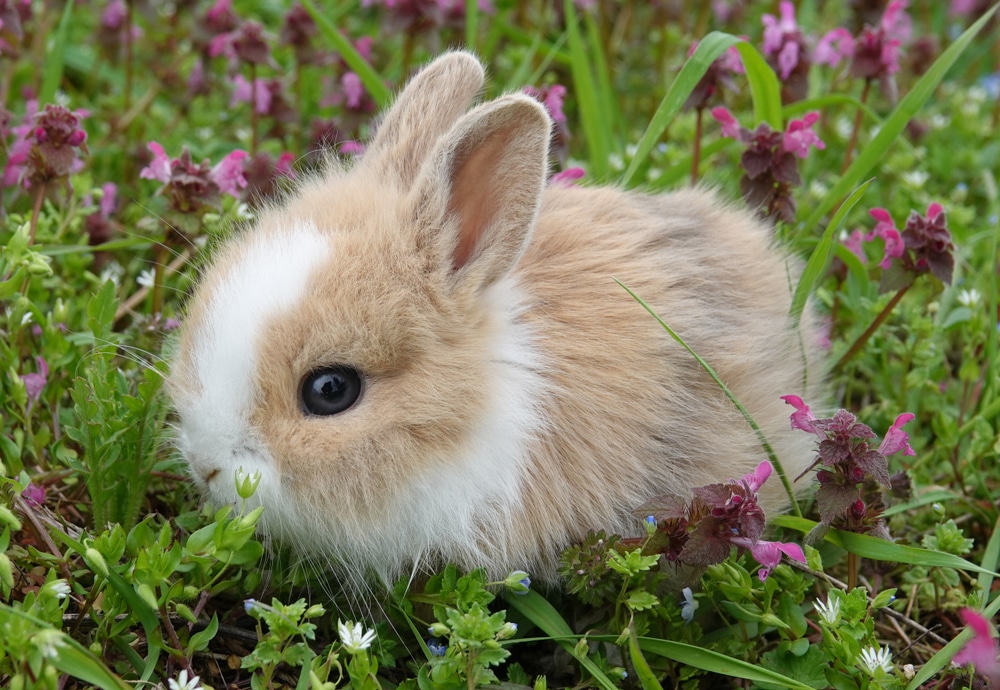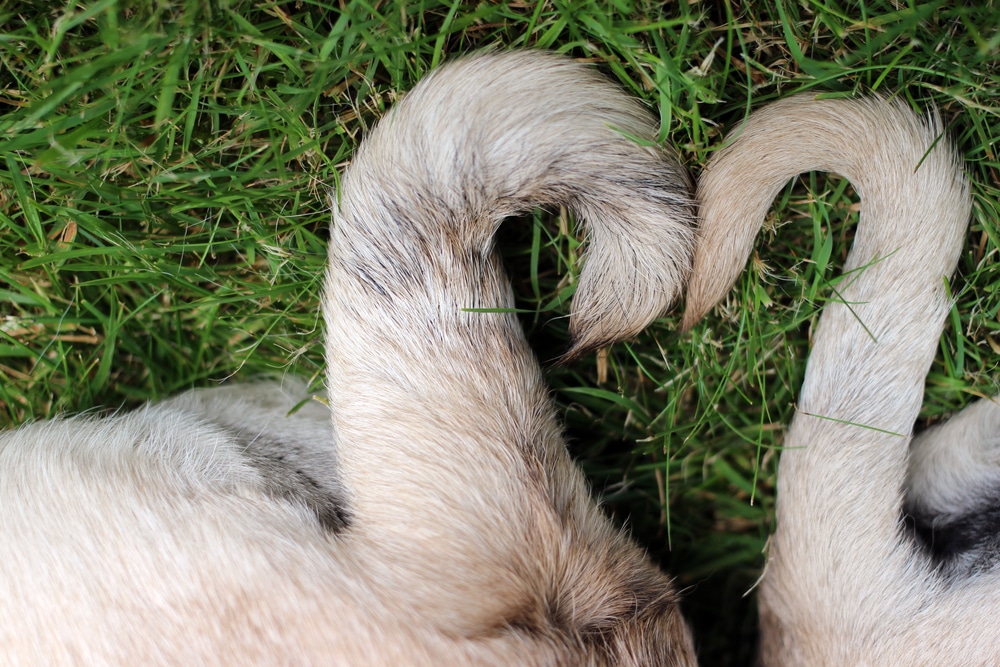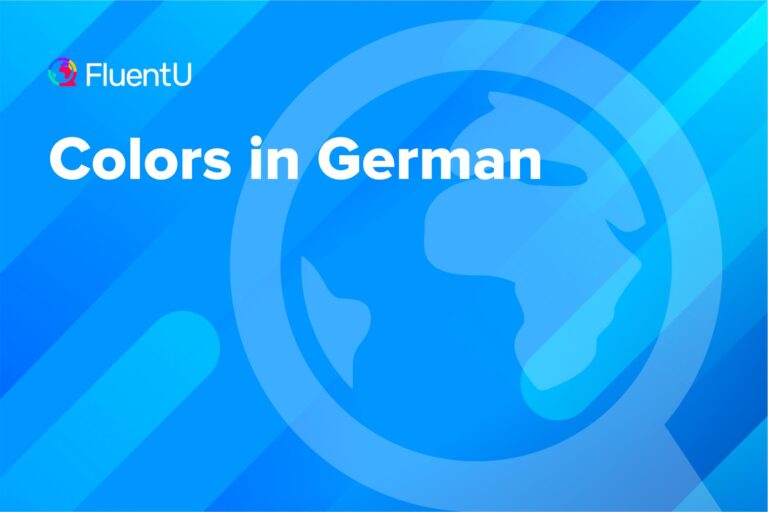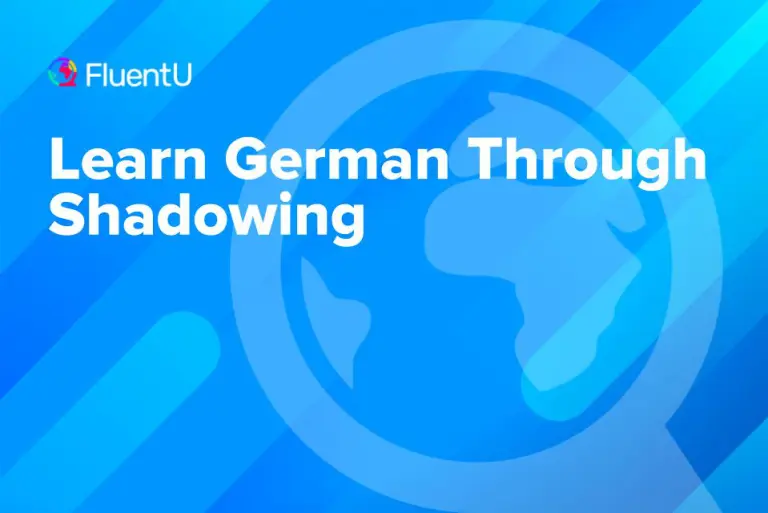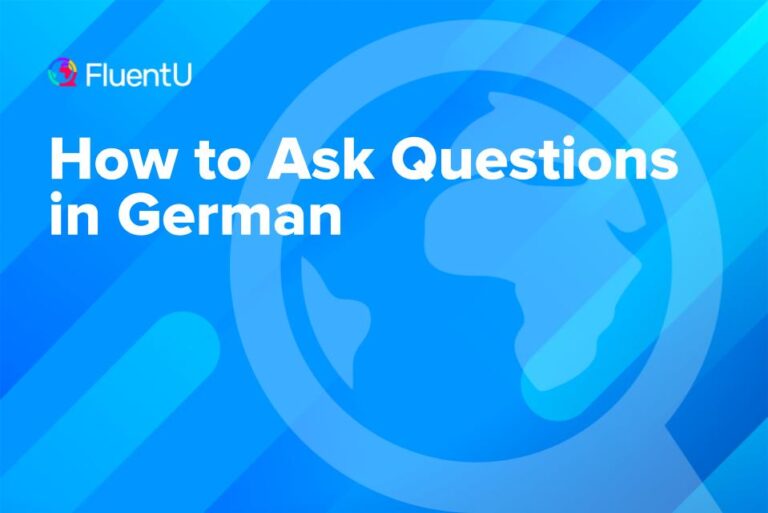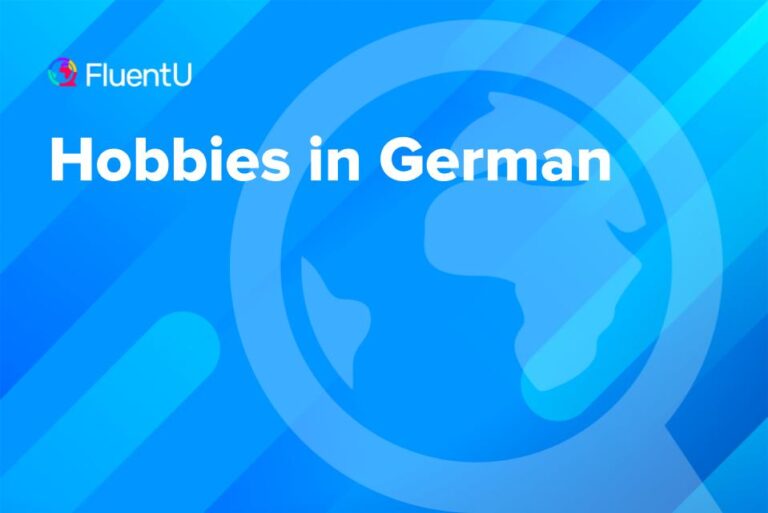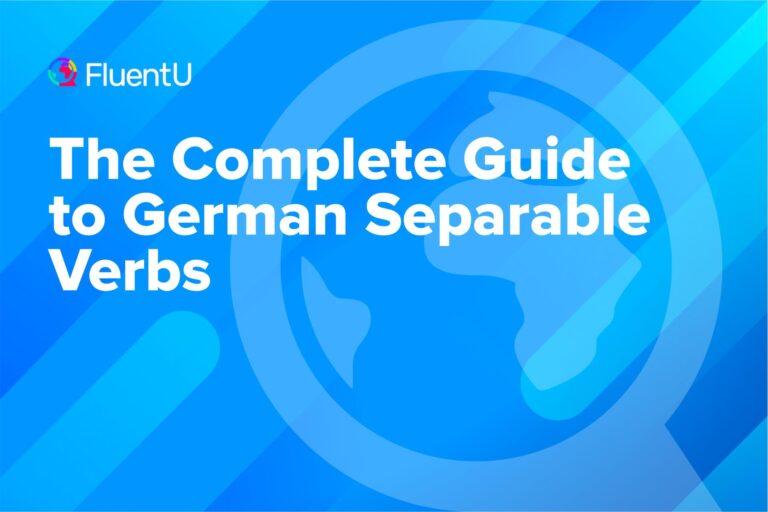Contents
- Bauernhoftiere (Farm Animals)
- Haustiere (Common Animals and Pets)
- Waldtiere (Forest Animals)
- Insekten und Schädlinge (Insects and Household Pests)
- Wassertiere / Meerestiere (Aquatic Animals/Sea Animals)
- Zootiere (Zoo Animals)
- Tierbabys (Baby Animals)
- Tierkörperteile (Animal Body Parts)
- Common Verbs and Phrases Related to Animals in German
- How to Practice Animal Vocabulary in German
130+ Animals in German
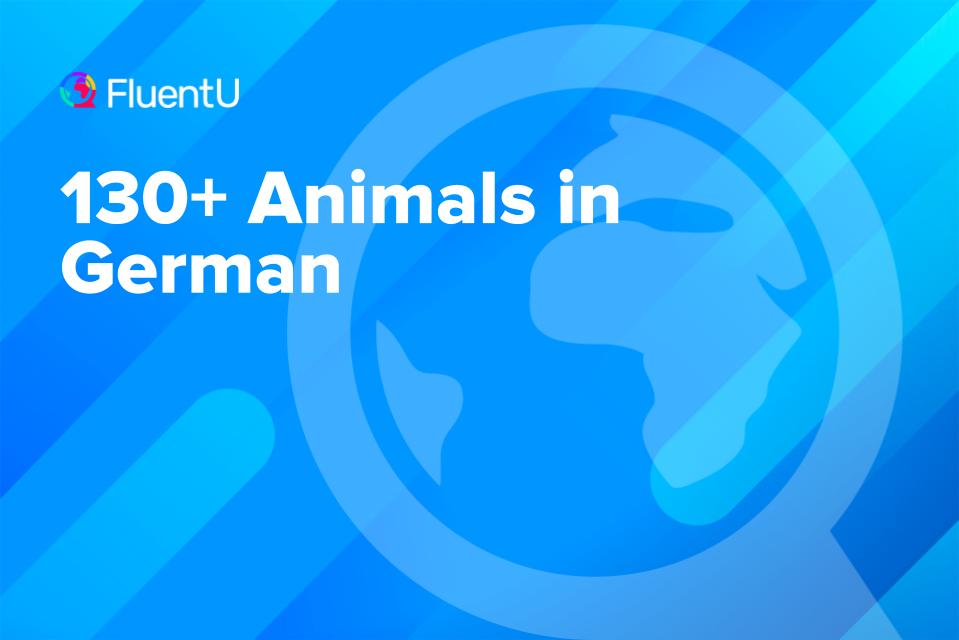
Knowing some animal vocabulary in German is infinitely useful for talking about nature, the world at large and even interactions in day-to-day life.
You might have reviewed a basic list of tiere (animals) in German that include “cat” and “dog.”
But in this post, get ready to learn over 130 animals in German and over 20 verbs, animal parts and phrases.
Download: This blog post is available as a convenient and portable PDF that you can take anywhere. Click here to get a copy. (Download)
Bauernhoftiere (Farm Animals)
Bauernhoftiere (farm animals) are some of the first animal names that children learn in school.
So they’re the first ones we’re going to learn in German! These animals live on der Bauernhof (the farm) and are cared for by der Bauer (the farmer).
| German | English |
|---|---|
| das Pferd | The horse |
| das Pony | The pony |
| die Kuh | The cow |
| das Schwein | The pig |
| der Hahn | The rooster |
| die Henne | The hen |
| das Schaf | The sheep |
| die Ziege | The goat |
| der Esel | The donkey |
| der Truthahn | The turkey |
| die Gans | The goose |
| die Ente | The duck |
| das Lama | The llama |
| das Rentier | The reindeer |
| der Büffel | The buffalo |
| der Waschbär | The raccoon |
| der Schwan | The swan |
| der Adler | The eagle |
| das Opossum | The possum |
Haustiere (Common Animals and Pets)
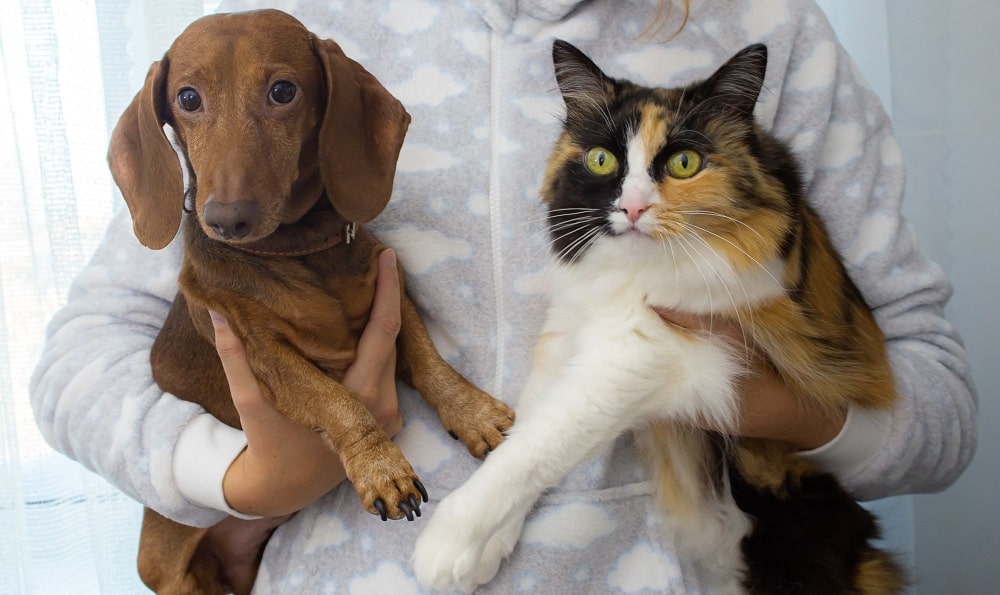
Unless you live on a farm, you’re much more likely to see the following group of animals in your everyday life. You might even have one of these animals as a Haustier (pet).
In fact, 45% of all German households had at least one pet in 2019. Imagine the lengthy conversations in German that you could have with native speakers about their beloved furry (or scaly) companions!
| German | English |
|---|---|
| der Hund | The dog |
| die Katze | The female cat |
| der Kater | The male cat |
| das Kaninchen / der Hase | The rabbit |
| der Goldfisch | The goldfish |
| das Meerschweinchen | The guinea pig |
| das Frettchen | The ferret |
| der Hamster | The hamster |
| die Schlange | The snake |
| der Vogel | The bird |
| der Fisch | The fish |
| die Eidechse | The lizard |
| der Frosch | The frog |
| die Chinchilla | The chinchilla |
Waldtiere (Forest Animals)
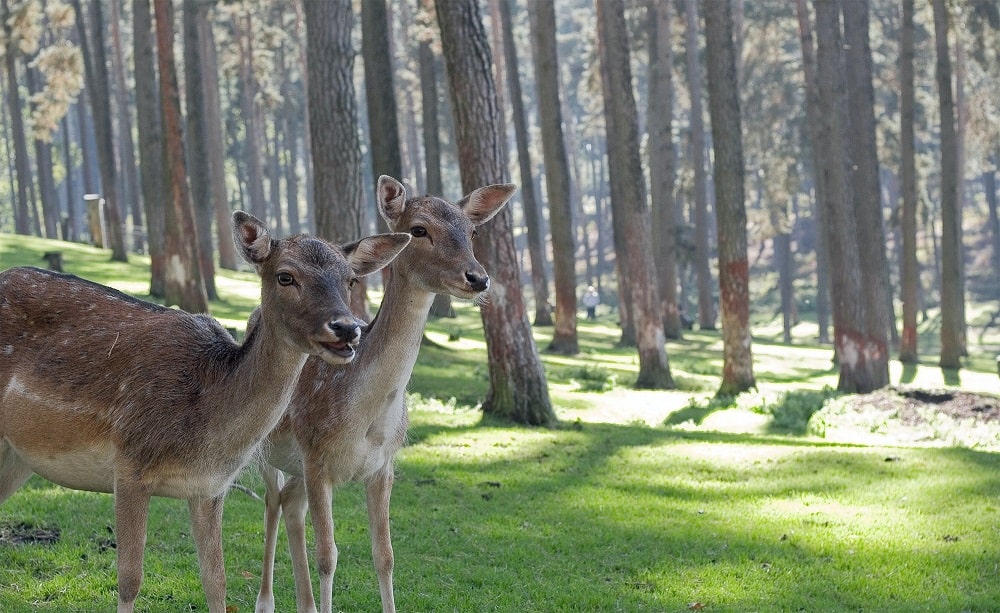
The German-speaking regions have a variety of wildlife and that includes a good amount of Waldtiere (forest animals). Most of the animals in this list could be found there.
Some of these might surprise you and be a little less common, such as wolves or moose. But they’re slowly making a comeback, either through conservation efforts or through natural causes.
| German | English |
|---|---|
| der Fuchs | The fox |
| der Luchs | The lynx |
| der Hirsch | The deer |
| der Bison | The bison |
| der Elch | The moose |
| der Steinbock | The ibex |
| der Bär | The bear |
| der Wolf | The wolf |
| der Waschbär | The raccoon |
| das Stinktier | The skunk |
| der Dachs | The badger |
| der Igel | The hedgehog |
| der Maulwurf | The mole |
| das Wildschwein | The boar |
| die Eule | The owl |
| die Fledermaus | The bat |
| das Eichhörnchen | The squirrel |
| der Kojote | The coyote |
| die Taube | The dove |
| die Taube | The pigeon |
Insekten und Schädlinge (Insects and Household Pests)
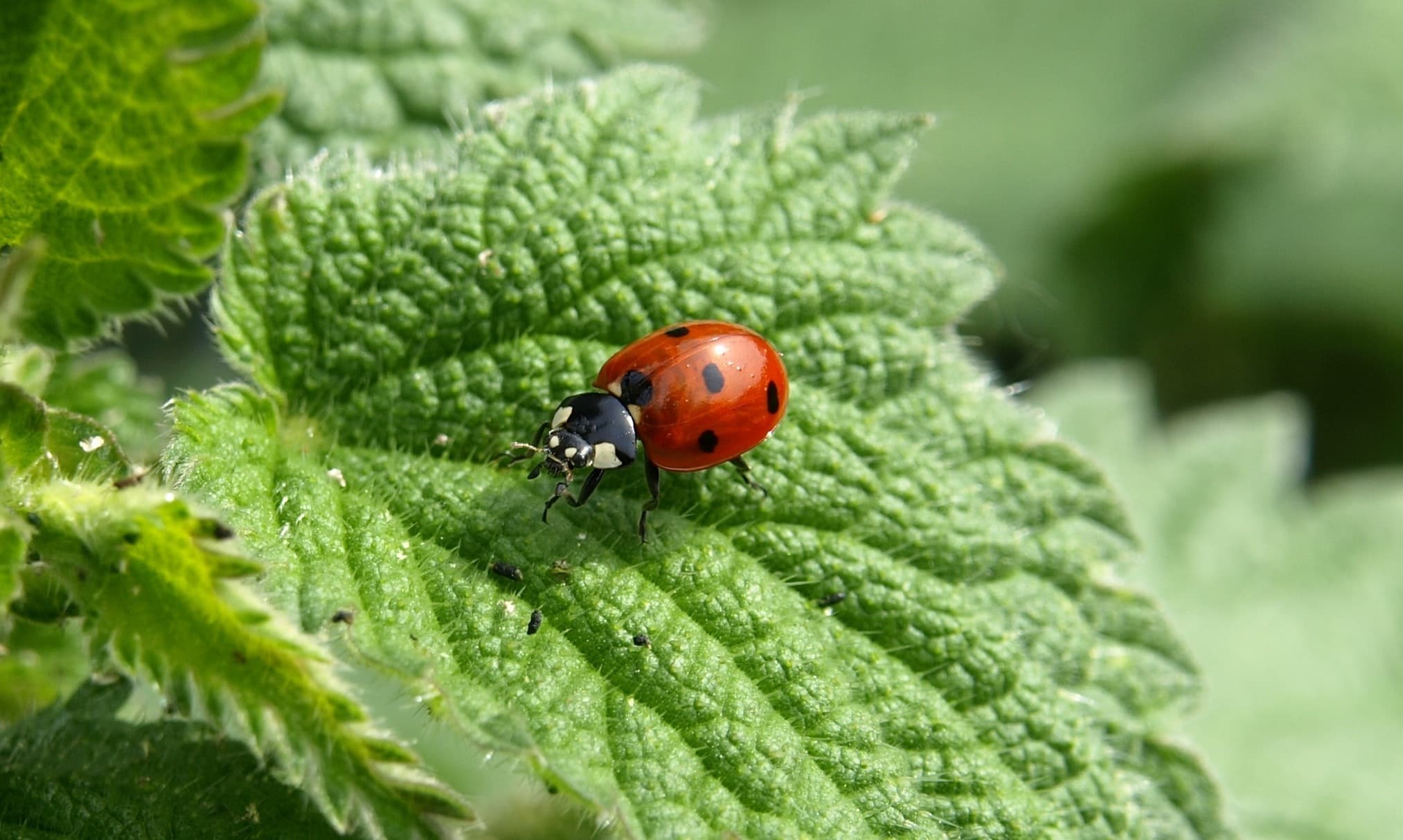
If only we lived in a world where only cats, dogs and other cute animals populated our homes. But we don’t! Sometimes we get an unwanted housemate, known as der Schädling (pest).
There are also some helpful and friendlier insects in this list as well.
| German | English |
|---|---|
| die Maus | The mouse |
| die Ratte | The rat |
| die Spinne | The spider |
| das Insekt | The insect |
| die Ameise | The ant |
| die Fliege | The fly |
| die Mücke / die Stechmücke / der Moskito | The mosquito |
| die Kakerlake | The cockroach |
| die Wespe | The wasp |
| die Biene | The bee |
| die Zecke | The tick |
| der Käfer | The beetle |
| der Marienkäfer | The ladybug |
| die Raupe | The caterpillar |
| der Schmetterling | The butterfly |
| der Leguan | The iguana |
| der Gecko | The gecko |
Wassertiere / Meerestiere (Aquatic Animals/Sea Animals)
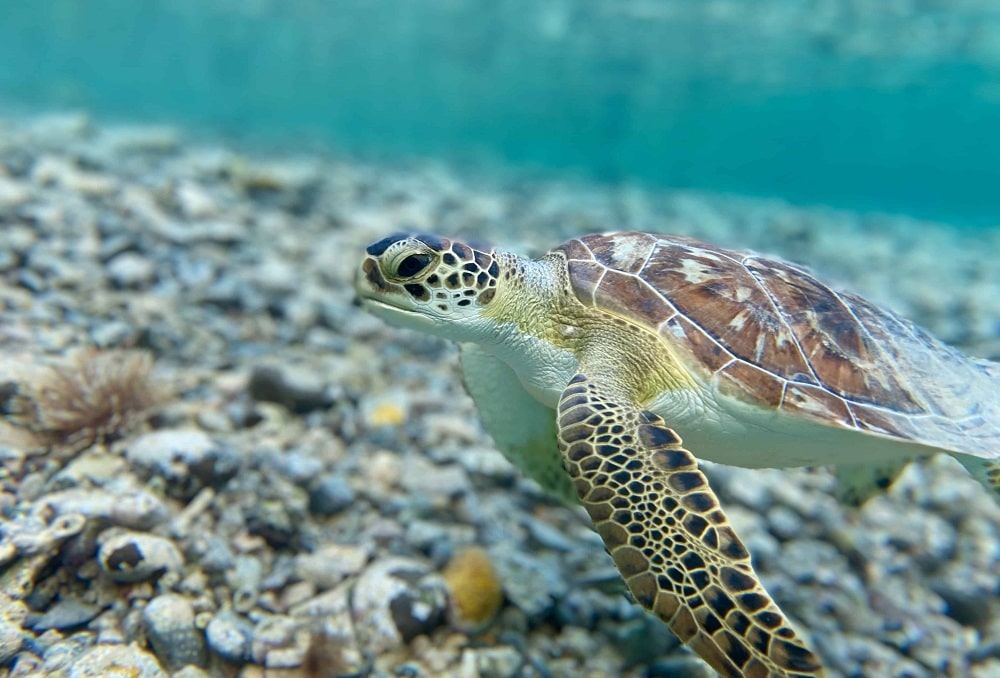
Germany is a land full of lakes and rivers.
In the north, it borders the Nordsee (North Sea) and the Ostsee (East Sea). Germany is also home to many Flüsse (rivers), most notably the Rhine, Danube and Elbe rivers that run through many German cities and towns.
As such, Germany is home to many Wassertiere (aquatic animals), both in its local waterways and in its Aquariums (aquariums) and Tierpark (zoos).
| German | English |
|---|---|
| der Otter | The otter |
| der Krake / der Tintenfisch / der Oktopus | The octopus |
| Der Kalmar / der Tintenfisch | The squid |
| der Delfin | The dolphin |
| der Wal | The whale |
| der Hai | The shark |
| die Krabbe | The crab |
| der Hummer | The lobster |
| der Seelöwe | The sea lion |
| die Robbe | The seal |
| das Walross | The walrus |
| die Qualle | The jellyfish |
| der Stechrochen | The stingray |
| der Aal | The eel |
| der Pinguin | The penguin |
| der Seestern | The starfish |
| der Seelöwe | The sealion |
| die Krabbe | The shrimp |
| das Seepferdchen | The seahorse |
| die Seekuh | The manatee |
Zootiere (Zoo Animals)
A visit to a Tierpark (zoo) will expose you to animals from all over the world. Germans love going to the zoo, and there are zoos in many of Germany’s big cities such as Berlin, Munich and Frankfurt.
| German | English |
|---|---|
| der Papagei | The parrot |
| der Löwe | The lion |
| der Gepard | The cheetah |
| der Tiger | The tiger |
| der Eisbär | The polar bear |
| der Affe | The monkey |
| der Menschenaffe | The ape |
| der Gorilla | The gorilla |
| das Känguru | The kangaroo |
| das Erdmännchen | The meerkat |
| der Elefant | The elephant |
| das Zebra | The zebra |
| die Giraffe | The giraffe |
| das Nilpferd | The hippopotamus |
| das Krokodil | The crocodile |
| das Nashorn | The rhino |
| der Strauß | The ostrich |
| die Schildkröte | The turtle |
| der Pfau | The peacock |
| der Alligator | The alligator |
| der Panther | The panther |
| das Kamel | The camel |
| der Flamingo | The flamingo |
| der Panda | The panda |
| die Hyäne | The hyena |
| die Wildkatze | The wildcat |
| die Antilope | The antelope |
| der Koala | The koala |
| der Leopard | The leopard |
| die Trägheit | The sloth |
| der Tukan | The toucan |
| das Chamäleon | The chameleon |
Tierbabys (Baby Animals)
Animals, while cute, are always cuter when they’re babies! As in English, German has specific words for animals when they’re young.
| German | English |
|---|---|
| das Ei | The egg |
| der Welpe | The puppy |
| das Kätzchen / das Katzenbaby | The kitten |
| das Entchen | The duckling |
| das Lamm | The lamb |
| das Kalb | The calf |
| das Fohlen | The foal |
| das Hirschkalb | The fawn |
| das Schweinchen | The piglet |
| das Küken | The chick |
Note that the ending -chen can be added to many nouns to make them diminutive (referring to the smaller version of something).
As in the cases of die Katze (the cat) and die Ente (the duck), we get the words das Kätzchen (the kitten) and die Entchen (the duckling).
This can also be added to other nouns such as das Hündchen (the little dog) and das Mäuschen (the little mouse) to describe the younger or smaller version of the animal.
Keep in mind, however, that by adding the ending -chen to animals, they automatically become neuter in gender despite what their previous grammatical gender was. This means that these nouns will take the definite article das (the) in the nominative case.
For example:
der Tisch (the table) → das Tischlein (the little table)
Where possible, you also need to add an umlaut to the first vowel in the diminutive:
die Maus (the mouse) → das Mäuschen (the little mouse)
Tierkörperteile (Animal Body Parts)
Animals—regardless of what language is being used to talk about them—have different body parts than us.
| German | English |
|---|---|
| die Schnauze | The snout |
| das Maul | The mouth/the muzzle |
| der Schwanz | The tail |
| die Pfote | The paw |
| der Pelz | The fur |
| die Feder | The feather |
| der Flügel | The wing |
| das Horn | The horn |
Common Verbs and Phrases Related to Animals in German
Finally, animals also have different needs than humans, and these require special verbs that describe the caring for and interacting with animals.
Some of these verbs can be extended to humans, but some are specifically for animals and will be pointed out as such in the list.
| German | English |
|---|---|
| Sich um etwas kümmern | To take care of something |
| Füttern | To feed |
| Streicheln | To stroke |
| Spazieren gehen / Gassi gehen | To take for a walk |
| Spielen | To play |
| Sich putzen | To groom itself |
| Striegeln | To groom an animal |
| Fressen | To eat |
In addition to having different body parts than humans, animals also eat differently in German than they do in English.
While we use the verb essen (to eat) in German to talk about the act of humans eating, the verb fressen (to eat) must be used to talk about an animal eating.
While fressen is commonly used to describe the act of an animal eating, it can also be used to mean “to gobble” or “to gorge” when a human is eating.
Despite being a different verb, fressen conjugates similarly to the verb essen. Check out the verb conjugation pattern here. Pay particular attention to the er, sie, es (he, she, it) conjugation of the verb:
- Ich fresse (I eat)
- Du frisst (you eat)
- Er, Sie, Es frisst (he, she, it eats)
- Wir fressen (we eat)
- Ihr fresst (you all eat)
- Sie fressen (they eat)
How to Practice Animal Vocabulary in German
Now that you’ve learned all these words and phrases to talk about animals in German, you’re going to need a way for it all to sink in!
Luckily, there are many places online where you can practice them all.
Digital Dialects
Digital Dialects offers a challenging, interactive online game for learning German animal vocabulary. Who doesn’t love a game that’s fun and educational, after all?
FluentU
FluentU is one of the best websites and apps for learning German the way native speakers really use it. FluentU takes real-world videos—like music videos, movie trailers, news and inspiring talks—and turns them into personalized language learning lessons.
Watch authentic media to simultaneously immerse yourself in the German language and build an understanding of the German culture.
By using real-life videos, the content is kept fresh and current. Topics cover a lot of ground as you can see here:
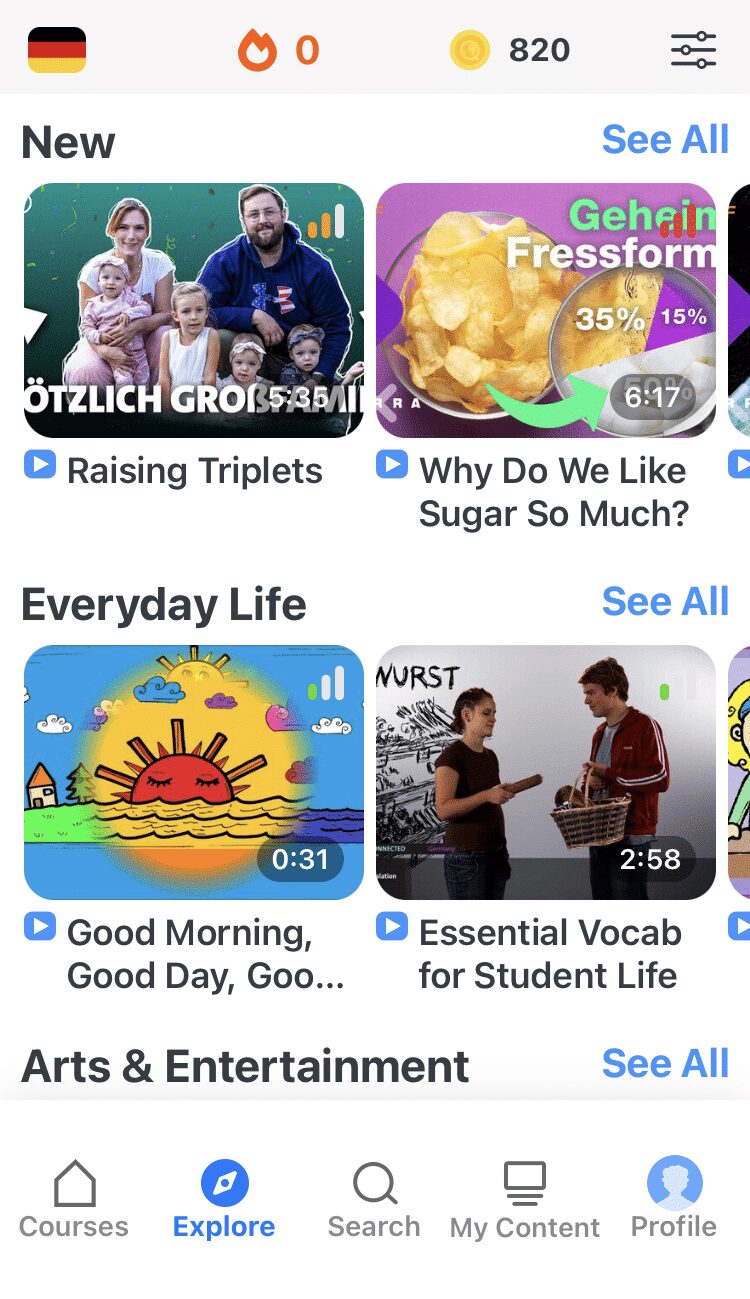
Vocabulary and phrases are learned with the help of interactive subtitles and full transcripts.
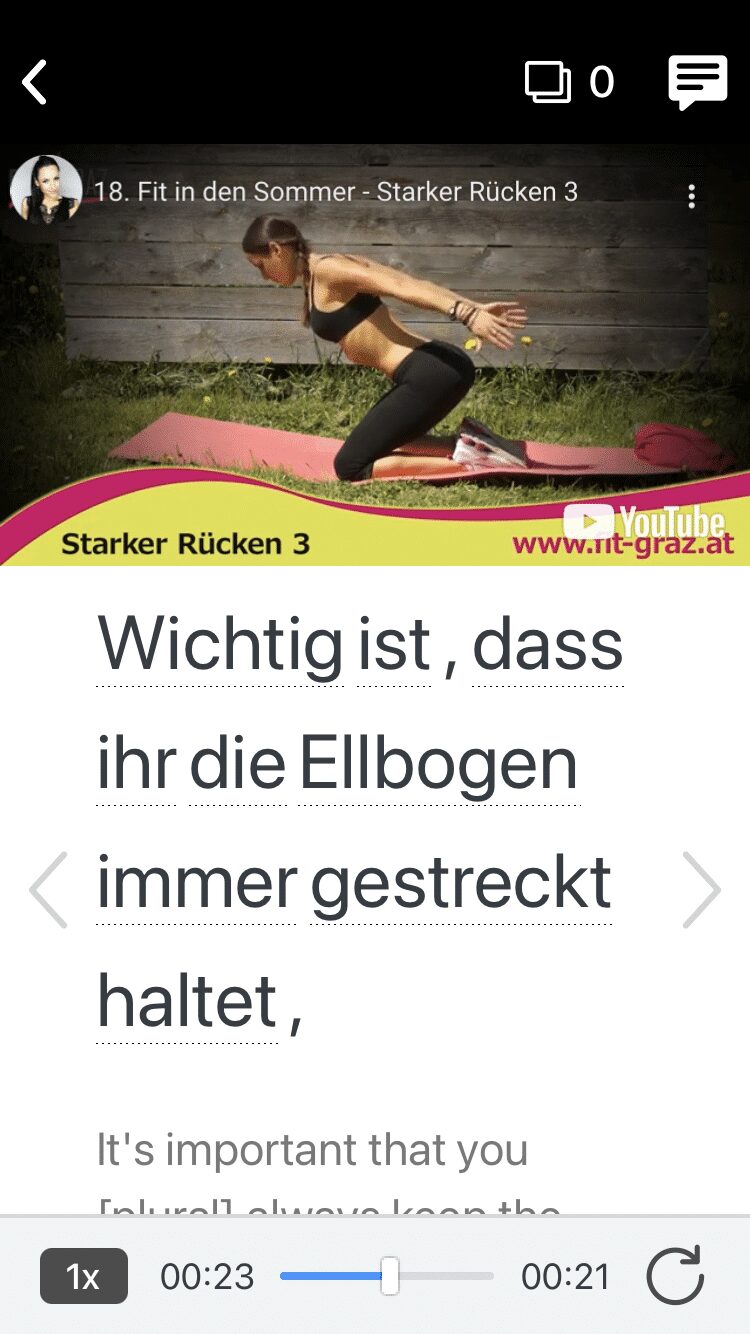
Hovering over or tapping on any word in the subtitles will automatically pause the video and instantly display its meaning. Interesting words you don’t know yet can be added to a to-learn list for later.
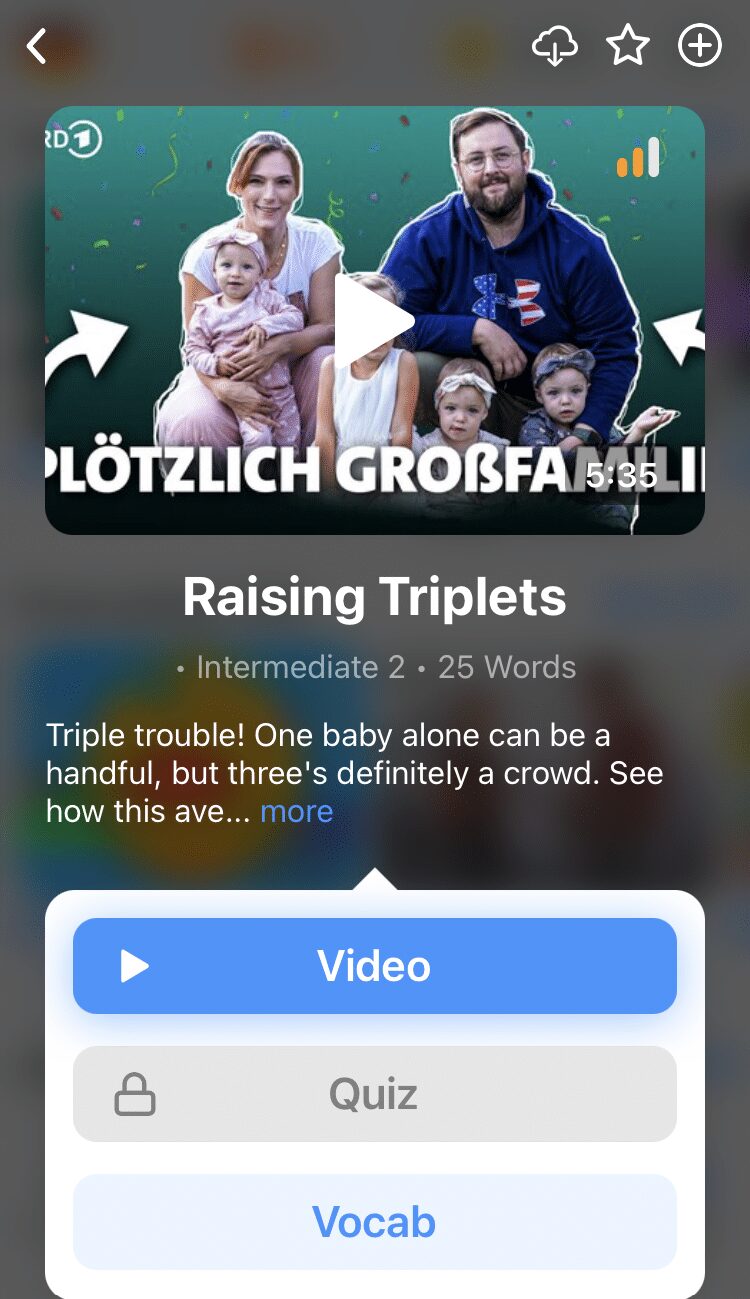
For every lesson, a list of vocabulary is provided for easy reference and bolstered with plenty of examples of how each word is used in a sentence.
Your existing knowledge is tested with the help of adaptive quizzes in which words are learned in context.
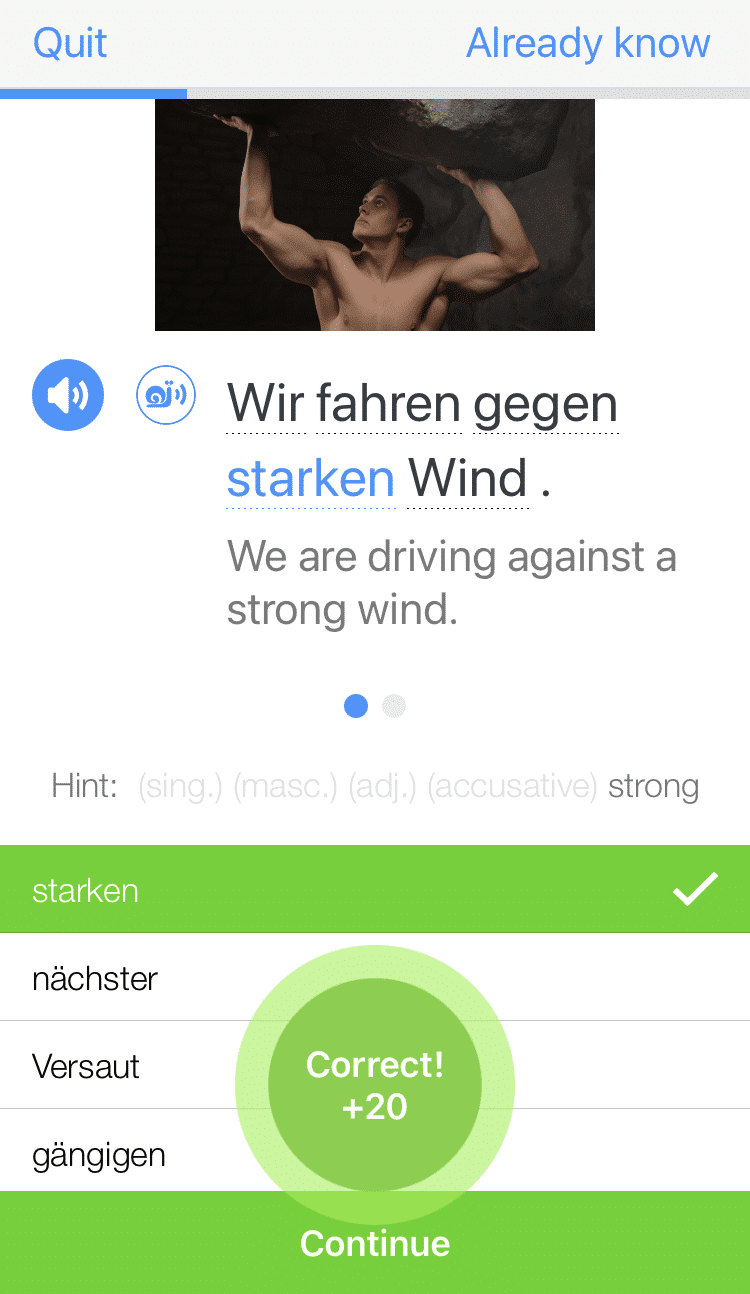
To keep things fresh, FluentU keeps track of the words you’re learning and recommends further lessons and videos based on what you've already studied.
This way, you have a truly personalized learning experience.
Start using the FluentU website on your computer or tablet or, better yet, download the FluentU app from the iTunes or Google Play store. Click here to take advantage of our current sale! (Expires at the end of this month.)
Sporcle
Sporcle has a quiz for practicing the spelling of a variety of German animals.
German spelling can be tricky, so this resource will prove to be very beneficial for learners who are looking to improve their writing skills.
ToLearnFree
ToLearnFree offers a few quizzes for practicing.
The first allows you to practice farm animals, and the second is specifically for practicing baby animals. The third quiz will help you practice aquatic animals.
Now that you’ve learned over 130 words and phrases related to animals in German, you’re on your way to the lion’s share of German fluency!
Download: This blog post is available as a convenient and portable PDF that you can take anywhere. Click here to get a copy. (Download)
